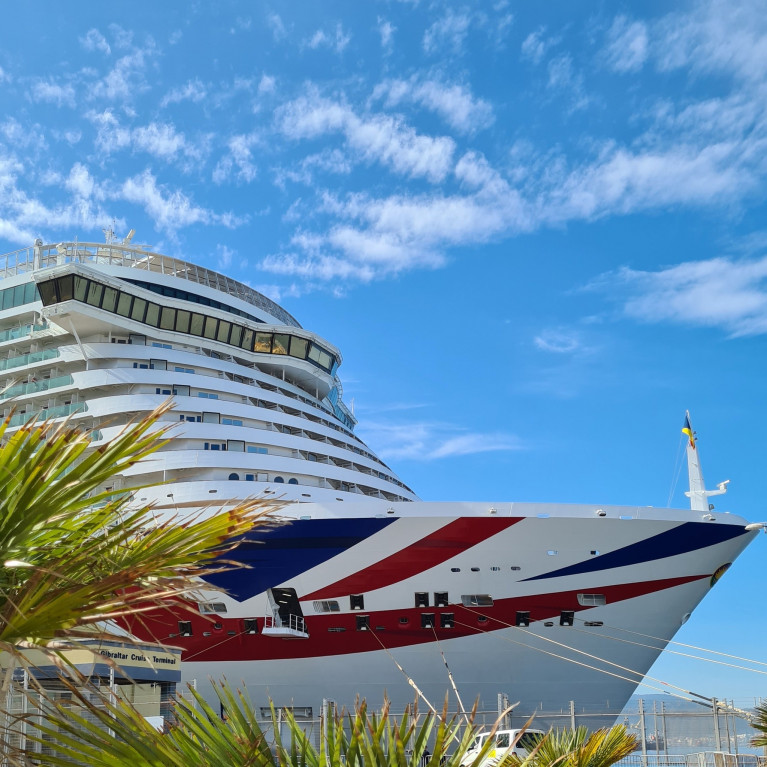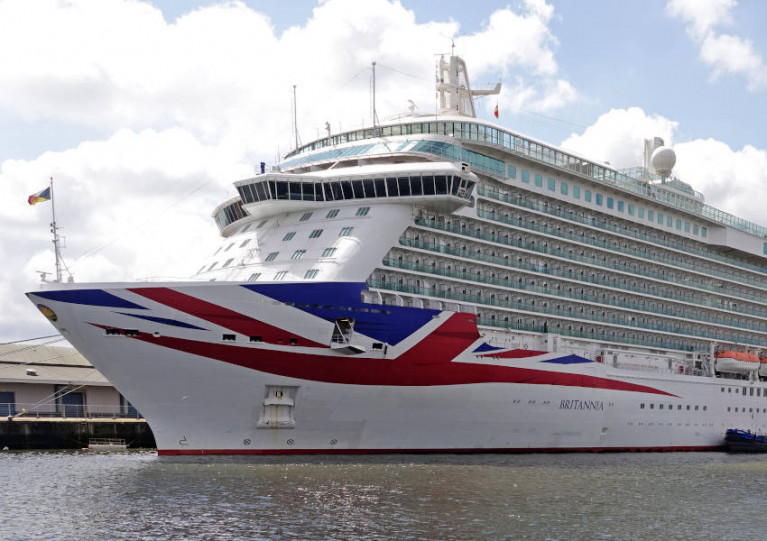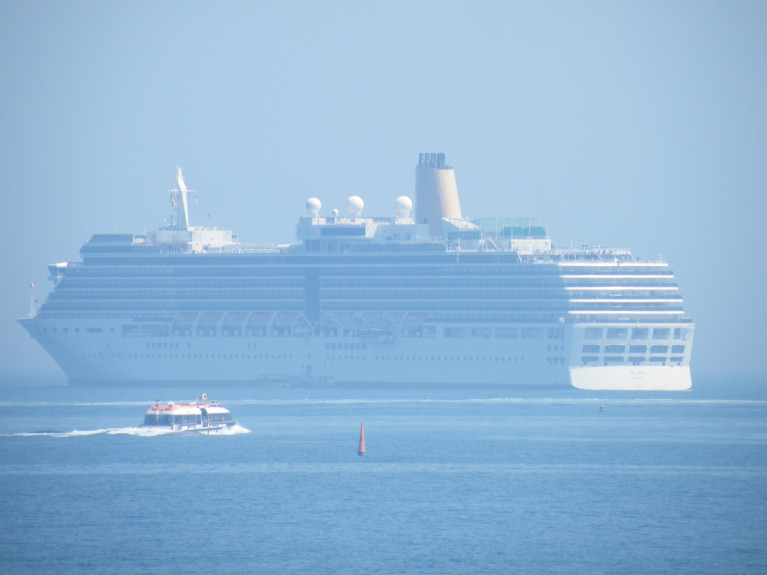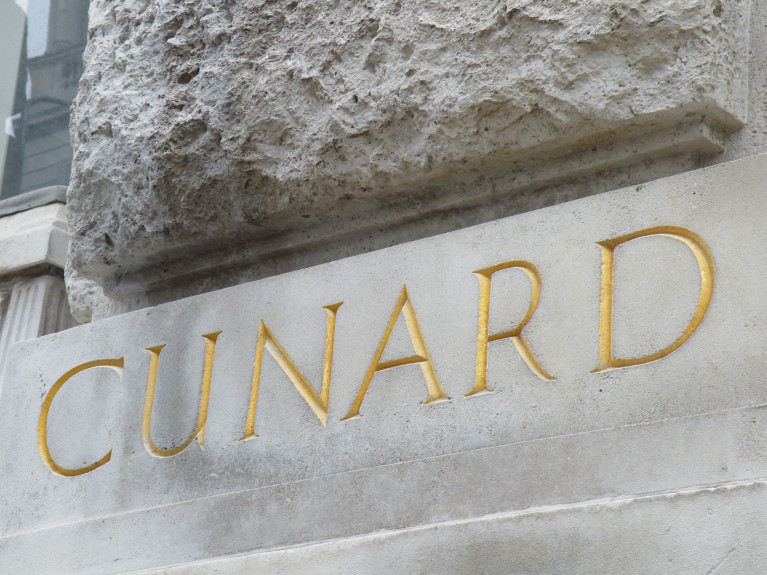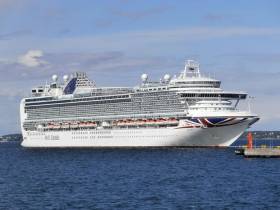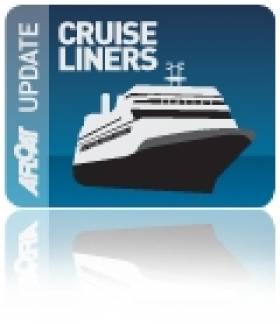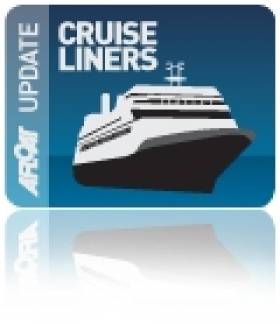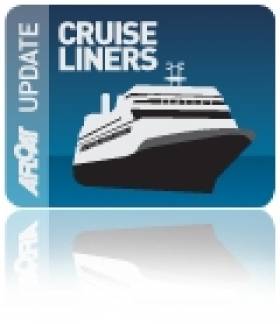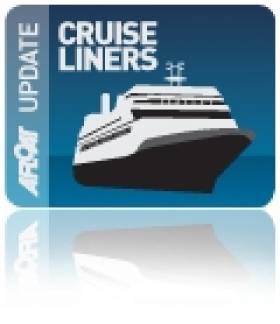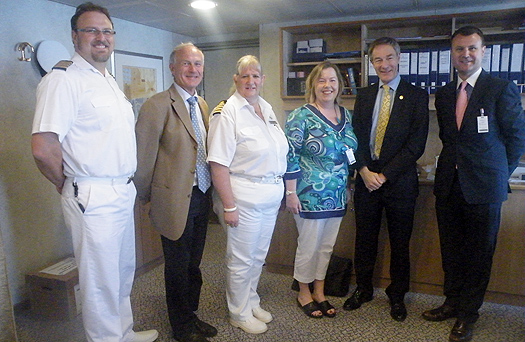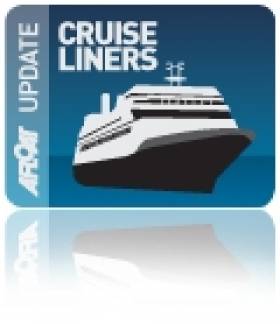Displaying items by tag: P&O Cruises
P&O Cruises Based in Southampton Is Forced to Clarify it is Not Linked to P&O Ferries
The brand P&O Cruises, owned by Carnival Corporation & PLC, is faced with a growing tirade of abuse as the British public mistakes it for P&O Ferries which Afloat adds is owned by DP World based in Dubai, United Arab Emirates.
As ITV News reports, the Southampton based cruise company has been forced to clarify its relationship with P&O Ferries which as Afloat previously reported fired 800 seafarers on Thursday.
On its website and social media channels the company said: "P&O Cruises is part of Carnival Corporation & PLC and as such is entirely unrelated to P&O Ferries."
"Our thoughts go out to all those affected by yesterday’s news. However, please be assured it’s business as usual on our cruises and our crew look forward to welcoming you on board soon."
It was originally a subsidiary of the shipping company P&O and was founded during a restructuring of P&O's operations in 1977.
P&O Cruises was divested from P&O in 2000, becoming a subsidiary of P&O Princess Cruises. In 2003 the company merged with Carnival Corporation.
More on the story here and Afloat's coverage of Iona, their biggest cruiseship built for the UK market which entered service almost a year ago.
P&O Cruises says British passengers on two of its cruise liners this summer will need be fully vaccinated against COVID-19 before joining any voyage.
According to Marine Industry News, it is the cruise line’s “strong expressed preference” that British guests boarding the Britannia and Iona in Southampton have received two doses of an approved vaccine at least seven days prior to departure.
Proof of such will be required at the terminal, as will travel insurance — any passenger without either will be denied boarding, the company adds.
Cruise Operator P&O Cancels Sailings Up to April 2021
Operator P&O Cruises will not resume cruise sailings until at least April next year.
The company ended its cruises in March in response to the coronavirus pandemic and has not resumed any of its voyages since.
The Southampton-based firm, which is part of the Carnival group, said the continued pause in operations was because of "the current uncertainty around European ports of call".
The latest round of cancellations affects 19 planned cruises.
For much more click BBC News here to include a comment from P&O's CEO in addition the sight of idle cruiseships at anchor of the UK's south coast formed an 'unusual attraction' during the summer.
Among these cruiseships as Afloat identified in the report's photo offshore of Weymouth is Arcadia (on left) an infrequent caller to Irish waters.
Cunard and P&O Cruises Operator Announces 450 Job Cuts
Cruise jobs of around 450, reports LiverpoolEcho, are to be axed by Carnival UK which operates cruise lines Cunard and P&O Cruises amid the coronavirus pandemic.
The company said it wants to treat everyone "with fairness and respect" but said the changes were needed to "ensure the future sustainability" of the business.
The news comes after P&O Ferries said it would be forced to cull a quarter of its employees by making them redundant, as the pandemic continues to have a major impact on businesses.
PA reports a Carnival UK spokesman said: "We have begun a period of consultation with our staff in Southampton across all levels of the business.
More from the Merseyside newspaper here.
Afloat.ie adds the Southampton based Carnival UK operation is not to be confused with P&O Ferries which is separately owned by DP World.
As for the P&O Cruises brand this was devested from P&O in 2000 and for a short timeframe became a subsidiary P&O Princess Cruises. By 2003 however the brand following a merger of the cruise company and Carnival Corporation, became part of the US cruise giant which has its headquarters located in Miami, Florida.
Captain of Cruiseship Fined €100,000 for Using Dirty Fuel
#Cruiseliners - A captain of a cruise ship found to be burning fuel with excessive sulphur levels has been fined €100,000 (£88,500) in a Marseille court, the first such ruling in France.
The prosecution writes The Guardian was intended to signal a new seriousness in tackling pollution from cruise ships after a spot-check in March on the Azura, operated by P&O Cruises, found it contained unauthorised bunker fuel.
The American captain, Evans Hoyt, knew the fuel was illegal – it contained 1.68% sulphur, 0.18% above the European limit – and the company was using it to save money, prosecutors said during the trial.
The judge handed Hoyt a fine of €100,000, but specified that the parent company of P&O, the US-based Carnival, should pay €80,000 of the sum. The company had “wanted to save money at the expense of everyone’s lungs”, the prosecutor Franck Lagier told the court in October.
A recent report in the journal Nature attributed 400,000 premature deaths and 14m cases of childhood asthma a year to emissions from dirty shipping fuel.
A spokesman for Carnival said: “The Carnival group carries over 12 million guests on its vessels each year and takes its legal and moral obligations towards the protection of the environment very seriously indeed. We were therefore very disappointed to be prosecuted for this offence, which was based on a European law the French environment ministry had explicitly informed the cruise industry would not be applied to cruise ships and which, in any event, has still not been properly implemented. The captain was using the fuel in good faith, as directed by us, based on our understanding of the law. We have lodged an appeal and will consider the full decision of the court once it is available.”
For more including the port of Marseaille click here
Afloat adds the 3,100 passenger capacity cruiseship has visited Irish ports among them Cork (Cobh) with a first call in 2010.
A sister of the 'Grand' class ship, Carribean Princess Afloat previously covered in 2016 was then given a record fine for dumping oil using a so called 'magic pipe' within UK waters three years previously.
The cruiseship has visited Irish ports too notably in 2017 when making the most calls of any cruiseship to Dublin Port with a scheduled 13 calls alone to the capital.
Killybegs First P&O Cruises Caller Sets Sail
#KillybegsP&O - Killybegs first visitor from P&O Cruises, the 30,000 tonnes Adonia set sail last night as a lone piper played on the pier to mark her departure.
Adonia had arrived in the port yesterday morning with about 700 passengers on board.
The master of the cruiseship, Captain David Box, called in at the Killybegs Information Centre and presented a commemorative plaque to Manager, Anne Dorrian, and the team.
For more on the debut call of the prestigious cruise operator, see yesterday's DonegalNow.com
Another P&O caller and the largest ever cruiseship due to Killybegs as Afloat previously reported is the 69,000 tonnes Oriana on 26 June.
The 1,800 passenger ship is one of a record breaking season of eight cruise callers this year to visit the north-west port.
Largest Cruiseships to Killybegs to Visit in 2015
#Cruiseliners - Killybegs Information Centre has confirmation through Sinbad Marine Services that three visits to the port in 2015 have been scheduled by the prestigious brand P&O/Carnival Lines.
The cruiseships to visit Killybegs under the P&O Cruises flag will be the largest passenger ships so far to use the port. Among the brands of Carnival Group are famous lines such as Cunard, Princess Cruises and Holland America Line.
P&O's Adonia is due in port on June 17 and will return for a second visit on July 21. A second P&O Cruises fleet-member Oriana, which is twice the size, is due to berth on June 26.
The calls by P&O brings to a total of eight callers confirmed for 2015, and passenger figures visiting Killybegs next year is greater than last year's season, itself a record.
The 30,000 tonnes Adonia, with a length of 180.45 m (592 ft) is smaller by comparison to the 69,000 tonnes Oriana with a length of 260.00 m (853.02 ft).
Adonia has a capacity for more than 800 passengers while Oriana has a maximum capacity of more than 1,900 passengers with a crew of just under 800 (794).
Anne Dorrian of the Killybegs Information Centre said "This is great news and we hope it will lead to even bigger vessels visiting Killybegs in the future".
"The Adonia is a pathfinder ship, exploring ports which the larger ships of today had not previously considered. Hopefully, her visit will pave the way for some of the most splendid ships in the Carnival fleet to come to beautiful County Donegal."
She added "Between 2009 and 2014, there have been 52 visits by cruise ships to Killybegs with over 22,000 passengers and more than 6,000 crew. In 2015, the eight ships confirmed will bring an estimated 6,300 passengers to the town.
Carnival Cruise Lines is a British-American owned company, based in Florida and the brand is one of ten forming Carnival Corporation & plc.
The line has the largest fleet in the group, with 24 vessels accounting for more than 21% of the worldwide market share.
P&O Cruises Calls Again As Oriana Arrives on Anchorage Visit
#CruiseAnchorage - P&O Cruises Oriana anchored this morning off Dun Laoghaire Harbour and marks another visit of the famous company following fleetmate Arcadia which called earlier this month, writes Jehan Ashmore.
Oriana with a capacity for almost 2,000 passengers was completed in 1995 and the Bermuda-flagged 69,840 tonnes cruiseship had sailed overnight through the Irish Sea under the command of Captain D. Pembridge who has charge of the adults-only cruiseship.
The gloriously favourable weather conditions which saw passengers swimming during Arcadia's visit has somewhat diminished, however Oriana still offers a choice of three pools and four whirpool spas.
Guests can also avail of the many on board facilities and after taking an excursion ashore to Dun Laoghaire Harbour or trips to the capital and the neighbouring countryside, an appetite will invariably build-up. One option is The Marco Pierre White Ocean Grill restaurant situated in the sumptuous surroundings of the Curzon Room.
#P&OCruises – Dun Laoghaire Harbour Company welcomed today the mid-sized cruiseship Arcadia (83,500 tonnes) under the command of Captain S C Breton, who is the first female to take this position for P&O Cruises, writes Jehan Ashmore.
Arcadia had departed her homeport of Southampton on Sunday and spent a leisurely passage before arrival this morning in glassy flat-calm seas and weather conditions more akin to the Mediterranean.
Passengers swam on board two of the ships outdoor swimming pools while the 285m long cruiseship was anchored motionless in the strong blue seas of Dublin Bay.
Enjoying the weather are more than 1,900 passengers from the UK and a sprinkling of other nationalities. Eighty per cent of her guests will be taking tenders ashore to visit Dun Laoghaire or excursions into the capital and the neighbouring Wicklow mountains.
The 2005 built exclusively adult-only cruiseship will be departing around teatime this evening on the 900 nautical mile passage to the Icelandic capital Reykjavik. After visiting two more ports in Iceland as part of the 14-night cruise Arcadia heads across the North Sea with calls to Norway before returning to the familar Southampton Waters.
In recognition of the Arcadia's maiden call, presentation ceremonies took place on board between Captain Breton and Don McManus, Dun Laoghaire Harbour Company (DLHC) board member and Chairman of Dun Laoghaire Business Association and Cathaoirleach Carrie Smyth of Dun Laoghaire-Rathdown County Council. Also in attendence was David Dingle, CEO of Carnival Corporation (UK).
The cruise liner sector is a growing business within the tourism industry and Dun Laoghaire Harbour is capitalising on such strengths and following the construction of the purpose-built cruise passenger tender pontoon.
The passenger pontoon facility caters for medium and large-scale cruiseships such as the Queen Mary 2 which made her historic first call in May which marked the start of the season with 14 cruise calls to the harbour in 2013.
Within the next two months, a further seven cruise vessels are scheduled to visit Dún Laoghaire Harbour including the five-masted Wind Surf, which is due to dock within the harbour walls.
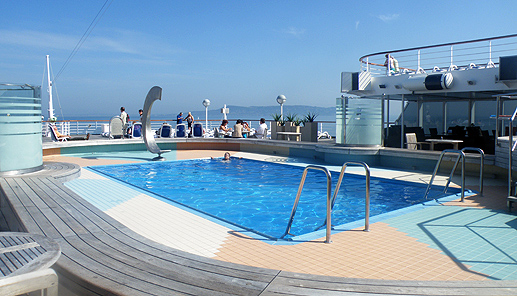
One of two swimming pools on the Arcadia and during her anchorage call in Dublin Bay. Photo Jehan Ashmore
Pictured (L-R) James Brown Deputy Captain, Don McManus (DLHC) and Chairperson Dun Laoghaire Business Association, Captain S C Breton, Cathaoirleach Carrie Smyth of DLRCoCo, David Dingle CEO Carnival Corporation (UK) and Nicky Logue, Fitzpatrick Castle Hotel. Photo: Jehan Ashmore
P&O Cruises Adonia… And the First Shall Become the Last
#CRUISE LINERS – The final cruise caller this year to visit Dublin Port tomorrow is P&O Cruises Adonia, which today is at sea, having departed Cobh Cruise Terminal yesterday, as previously reported. Albeit the smallest in the seven-strong P&O Cruise fleet, she was given pride of place as she led the company's 175th anniversary Grand Event held during the summer, writes Jehan Ashmore.
On that momentous day (3rd July) in Southampton, the 30,000 gross registered tonnes Adonia gathered with her considerably larger fleet mates (69,000 – 115,000 grt) and carrying between them 1,800-3,100 passengers each. Unlike her fleet mates however she exclusively caters for adults only and at only 710 passengers, provides for a more intimate cruising experience.
As each cruise ship took it turns to depart after one after the other, they formed a line down Solent waters where the maritime spectacle was an impressive display in seafaring skills and logistics as thousands of passengers had embarked to include Arcadia whose next port of call was Dublin.
The historic day to mark the origins of the famous company formed in 1837 was the theme of a packed out lecture presented by P&O Cruises Managing Director, Carol Marlow during last months' London Ship Show. Marlow, who was a former CEO of Cunard Line, gave an insightful and entertaining talk of the intensive preparations surrounding P&O Cruises day of celebration.
Despite all the planning, one major event that the P&O team could not arrange was for the sun to shine!..instead a rather misty dull overcast day lingered over the Hampshire port. Having said, many hundreds lined the Solent to watch the sail past as each vessel departed on seven cruises. To view a video of the splendid liners and heritage of the famous company click the series of videos HERE.
As for the London Ship Show which was organised by the Ocean Liner Society, this was to be the last time held under its current format where maritime memorabilia stands and lecture programme where provided to all those interested in the world of liners and ferries operating from the UK.


























